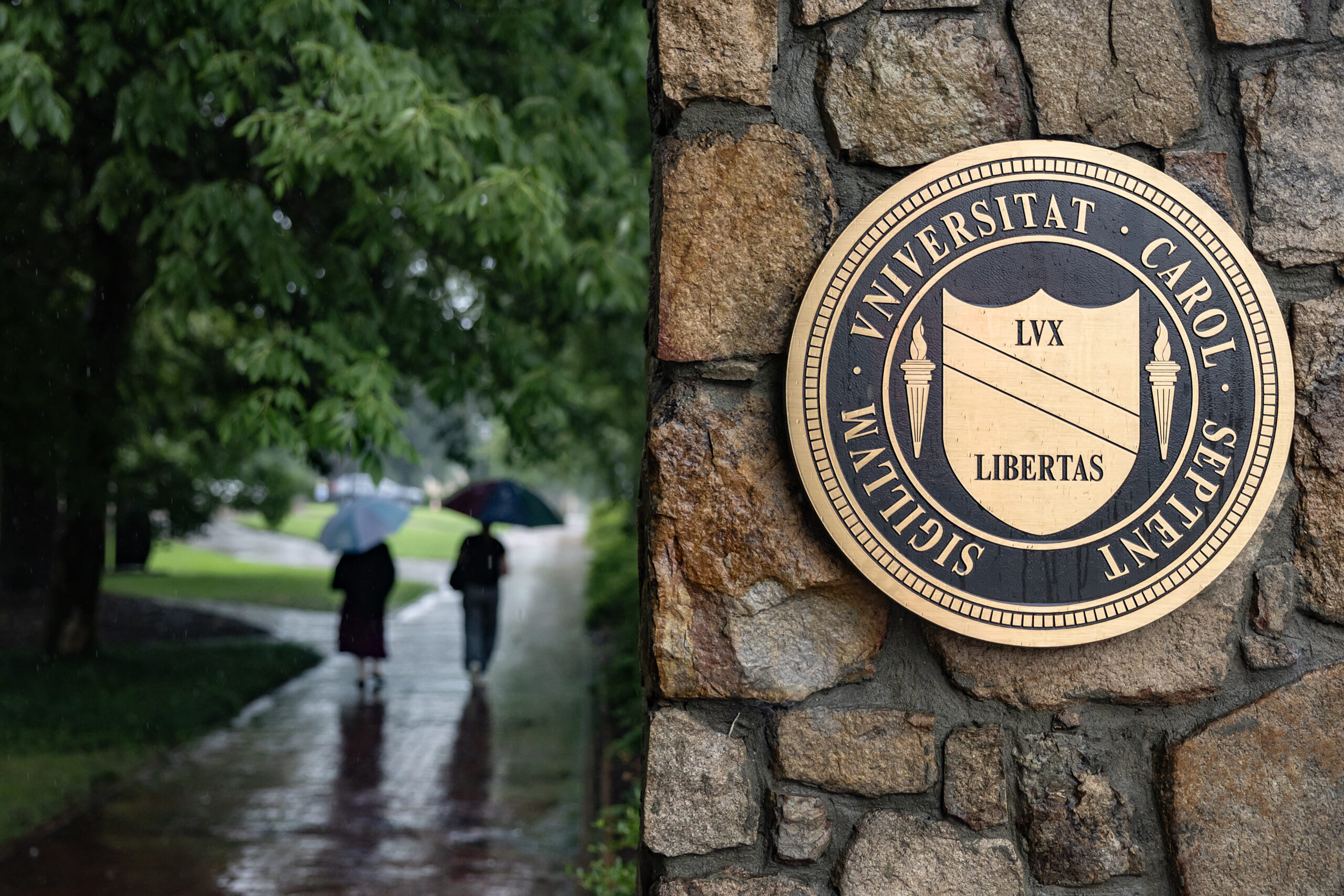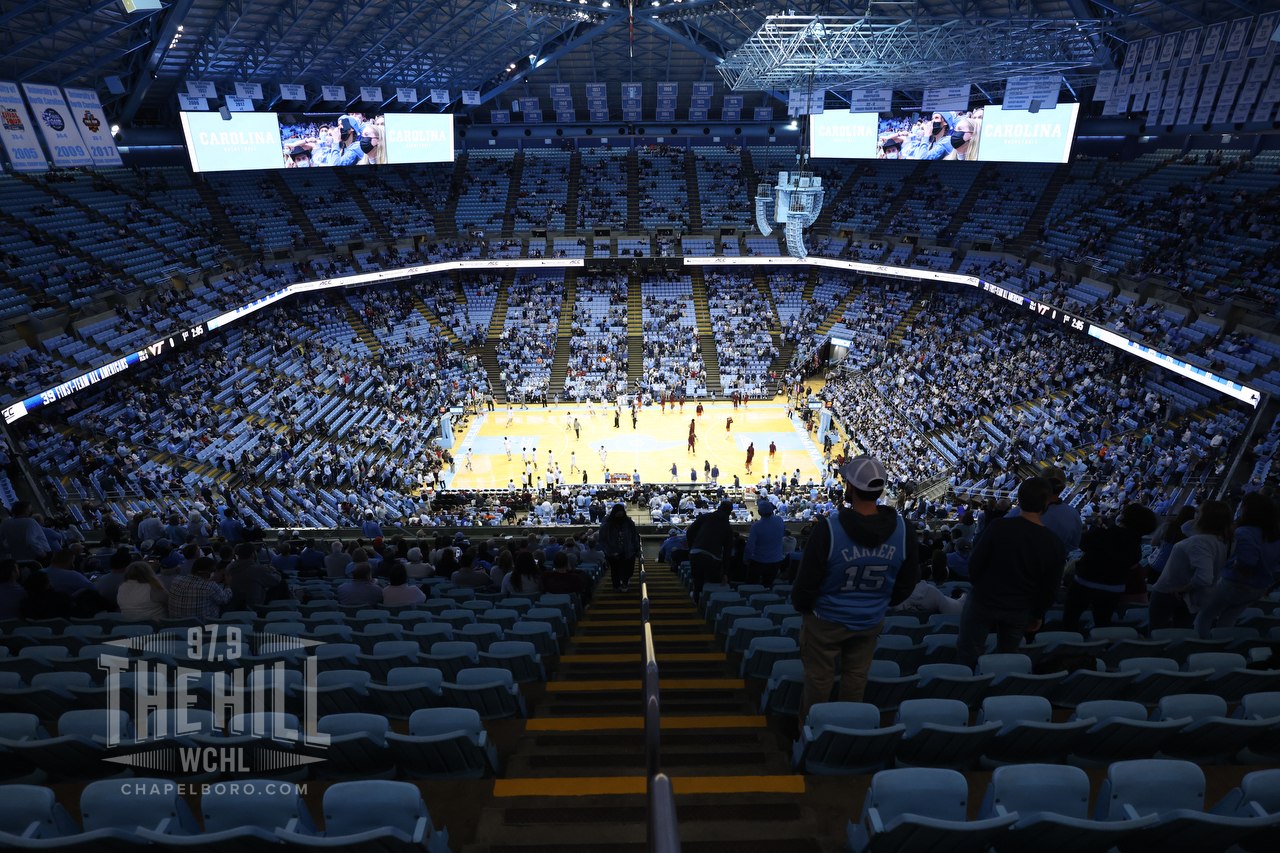A remarkable occurrence is taking place on campus right now, at one of UNC’s most recognizable and beloved landmarks.
This fall – and apparently for the last couple years – thousands of birds have gathered at the Davie Poplar as part of their annual migration.
The birds are chimney swifts, so named because they typically roost in chimneys. Chimney swifts need large vertical cavities to roost: those were once common in old-growth forests, but European settlers cleared those trees long ago, forcing the birds to make do with a manmade alternative. And over the last few centuries, they adapted – so much so that we’ve named the birds after the chimneys where they’re always found, and there have been almost no documented cases of swifts roosting in trees since colonial days.
Until now. And the tree they chose just so happens to be the most famous and well-known tree on campus.
This Wednesday, October 2, the New Hope Bird Alliance and the UNC Avian Society are teaming up to host a watch event. Everyone’s invited to come out from 7-8 p.m. and watch the birds circle over McCorkle Place before entering the Davie Poplar for the night.
Click here for more details on the watch event, from the North Carolina Audubon Society.
97.9 The Hill’s Aaron Keck spoke recently with Barbara Driscoll of the New Hope Bird Alliance, who first discovered the Davie Poplar roost.
The transcript below has been edited for clarity. Click below to listen to the full conversation.
BARBARA DRISCOLL: We’re so excited about finding the swifts in an actual tree. Historically, before the settlers came, swifts used trees, large trees like this. But with the colonists cutting down most of the big trees, they transitioned over to chimneys – hence the name, ‘chimney swifts.’
We’ve been doing work in downtown Chapel Hill for a number of years, counting swifts at different locations – at the post office and in Porthole Alley – (but) two years ago we noticed that the swift numbers had dropped dramatically. We’d been counting thousands of swifts each fall – when they start roosting en masse, in preparation to migrate to South America – but there was a dramatic dropoff, and we couldn’t figure it out.
And then last year I was in Porthole Alley, and (I saw) three swifts – and then they flew off, and I could hear all these swifts calling in the background. And I look over through my binoculars and see thousands of them flying around. So I started walking over towards McCorkle Place. And there were swifts just streaming around like a tornado. There were just so many. There were thousands of them.
AARON KECK: You had to be thinking, “I was two blocks away…”
DRISCOLL: I know. I was like, “how did we miss this? How did we not know about this?” It was really exciting. I kept saying, “well, what chimney are they going into?” There are chimneys down there, but most of them are capped. And then I realized they were all going into the Davie Poplar.
KECK: Of all the trees! The most famous one on campus.
DRISCOLL: They’ve got good taste! I was very excited to find out it was the Davie Poplar, because it’s a historical monument and the university has a vested interest in this tree. Because they’re maintaining it, the swifts are able to use it – so they’ve actually gone back to what they normally did historically, hundreds of years ago.
KECK: And this is good because chimneys increasingly are being capped, or homes are being built in ways that don’t have those traditional chimneys, so they’re needing to look for other places in the first place.
DRISCOLL: And with all the development we’re having, we’re losing some of those historic chimneys. A lot of schools had big chimneys on them. And in downtown Durham, there were a number of chimneys. And one thing that’s really important to understand is that even though the swifts roost in large numbers, only one pair will raise a set of chicks in a single structure. So we need a lot of chimneys for them to raise their chicks. Or open trees. Or, we actually have plans for how to build a swift tower: we’ve built one in Sandy Creek Park, and there’s one on Triangle Land Conservancy property.
KECK: There’s going to be a watch event on Wednesday, October 2, from 7-8 p.m. – and everyone’s invited out for this, right?
DRISCOLL: Yes. We’re working with the UNC Avian Society: we’ll just say a few words and then we’ll let the swifts do their own talking. It’s quite a spectacle.
KECK: What else should folks know about the chimney swifts?
DRISCOLL: So this year we have worked with the City of Durham to pass a resolution. Chimney swifts are part of a group of birds (whose) numbers have dropped more than any other group. They’ve dropped by 50 percent in the last 20 years, and they’re projected to drop even further – but there are things we can do to help them, like protecting the uncapped chimneys that still exist.
Also, this is peak migration (season) right now. Last night about 30,000 birds flew over Orange County. So we’re asking people to turn off their outside lights – and we’re hoping some commercial buildings will also take part in this – so birds don’t get confused while they’re migrating at night. They don’t see glass, so there’s a lot of window collisions. So we’re hoping that people will partake in lights-out between 11 p.m. and 6 a.m., and turn off all exterior lights on your house or your building.
Listen to the full conversation between Aaron Keck and Barbara Driscoll:
Podcast: Play in new window | Download
Subscribe: RSS






